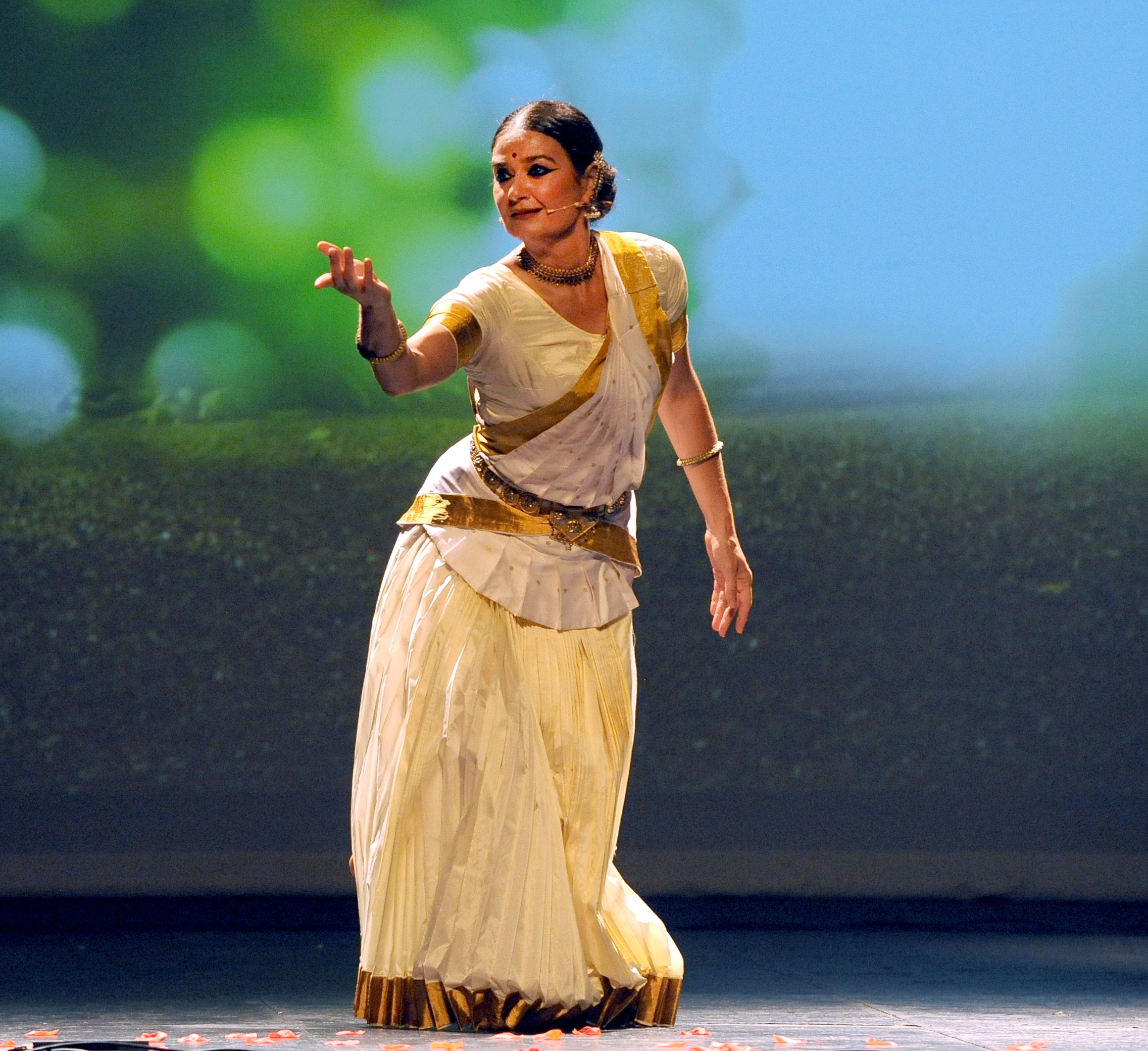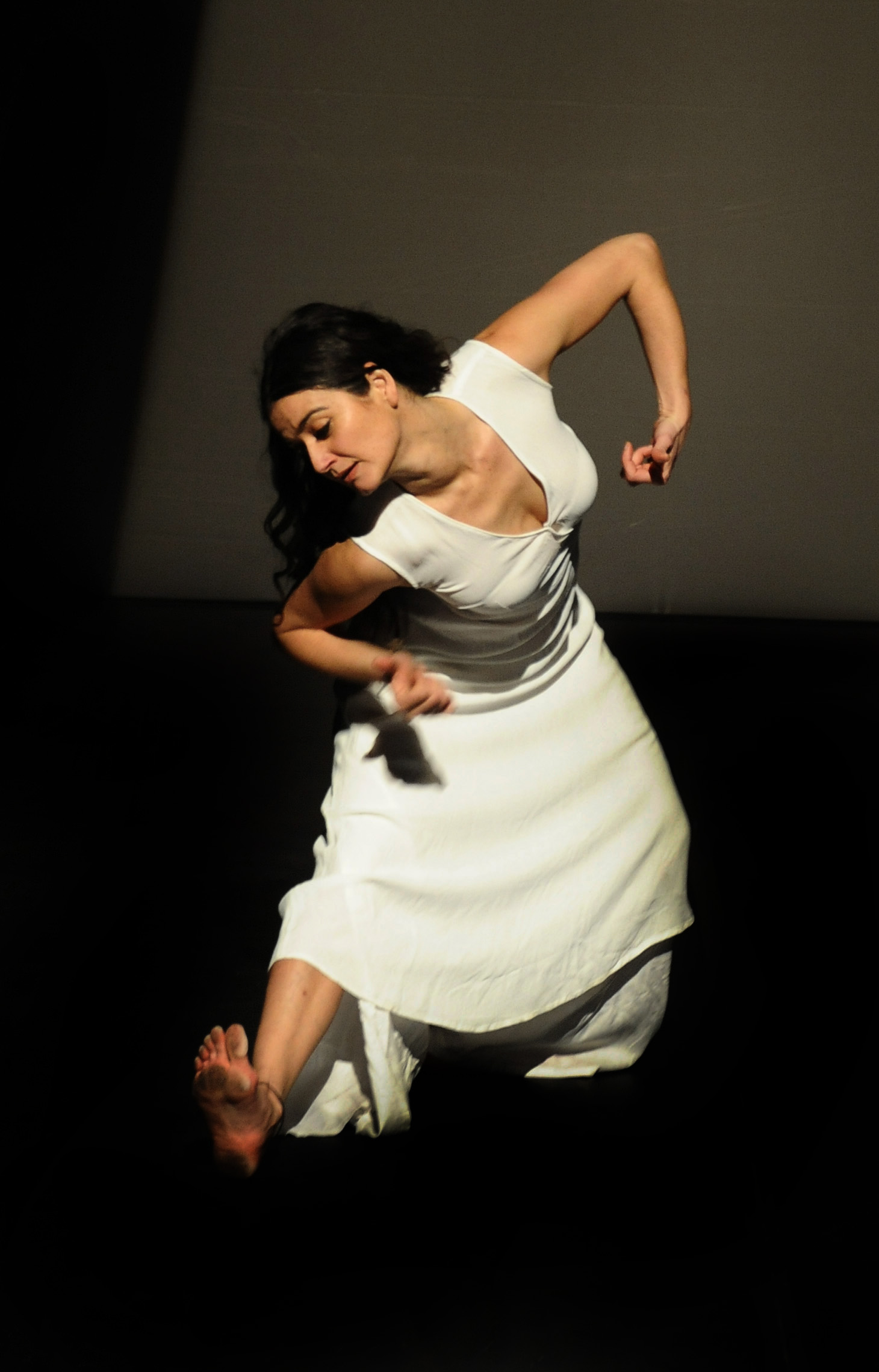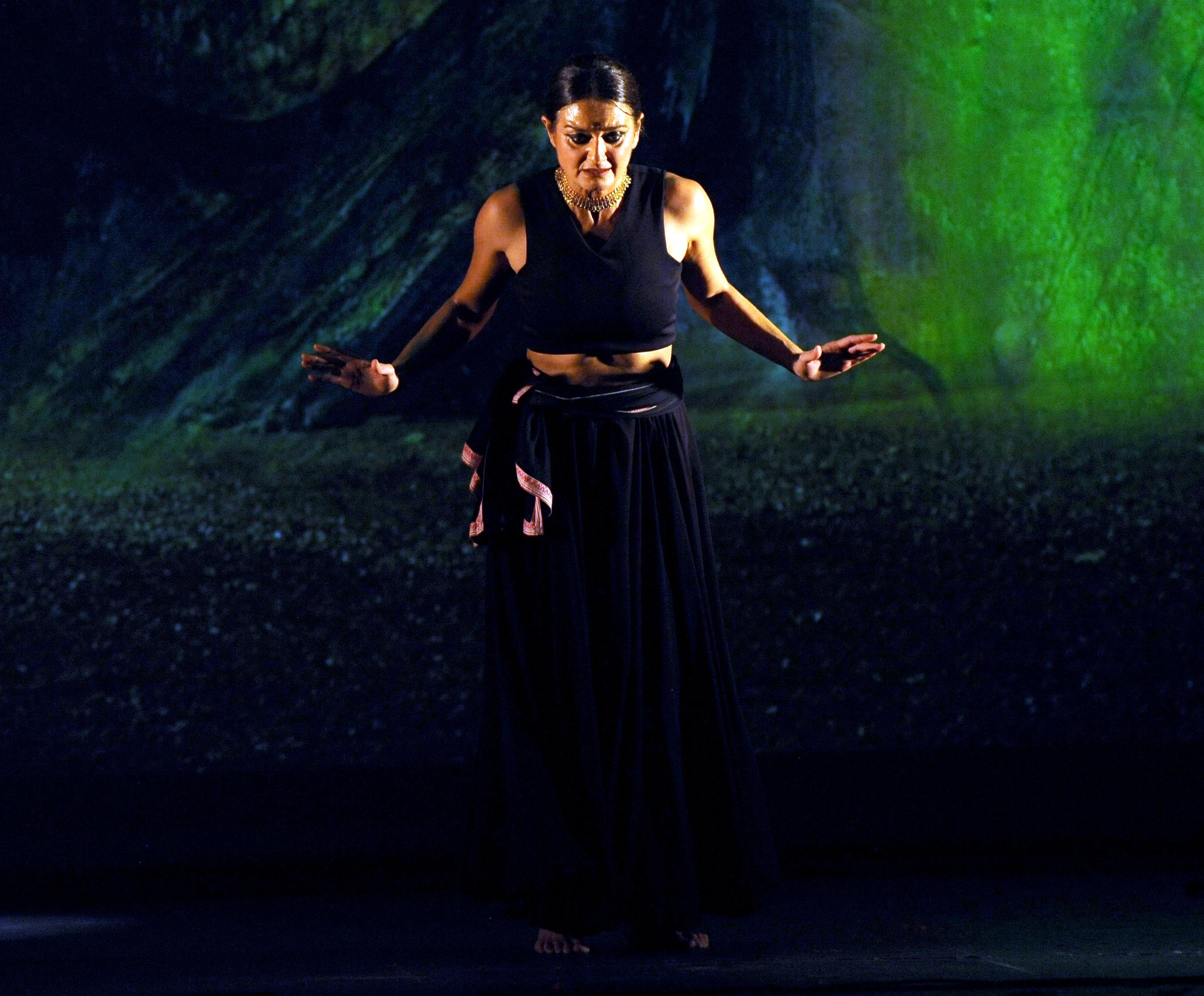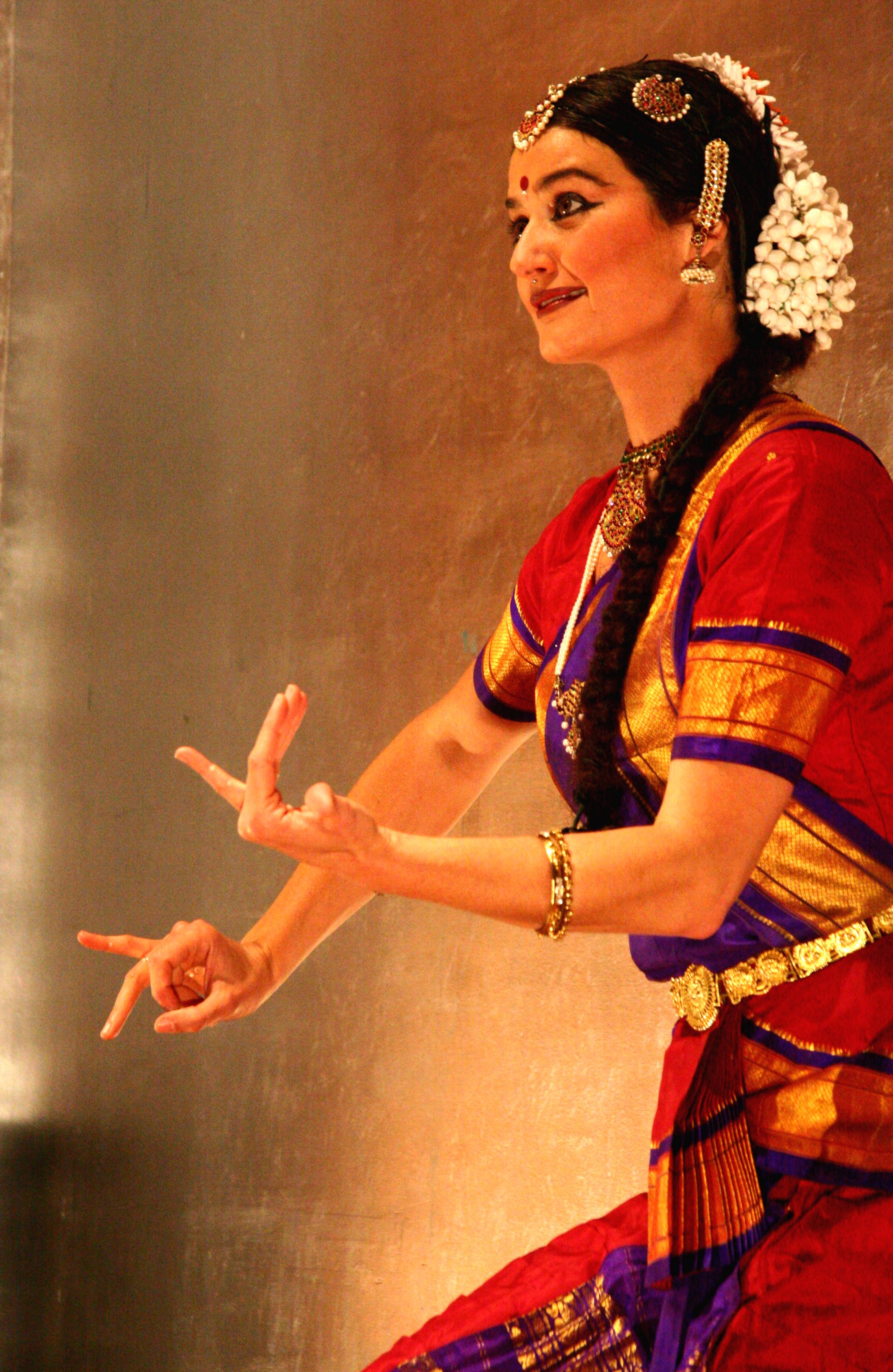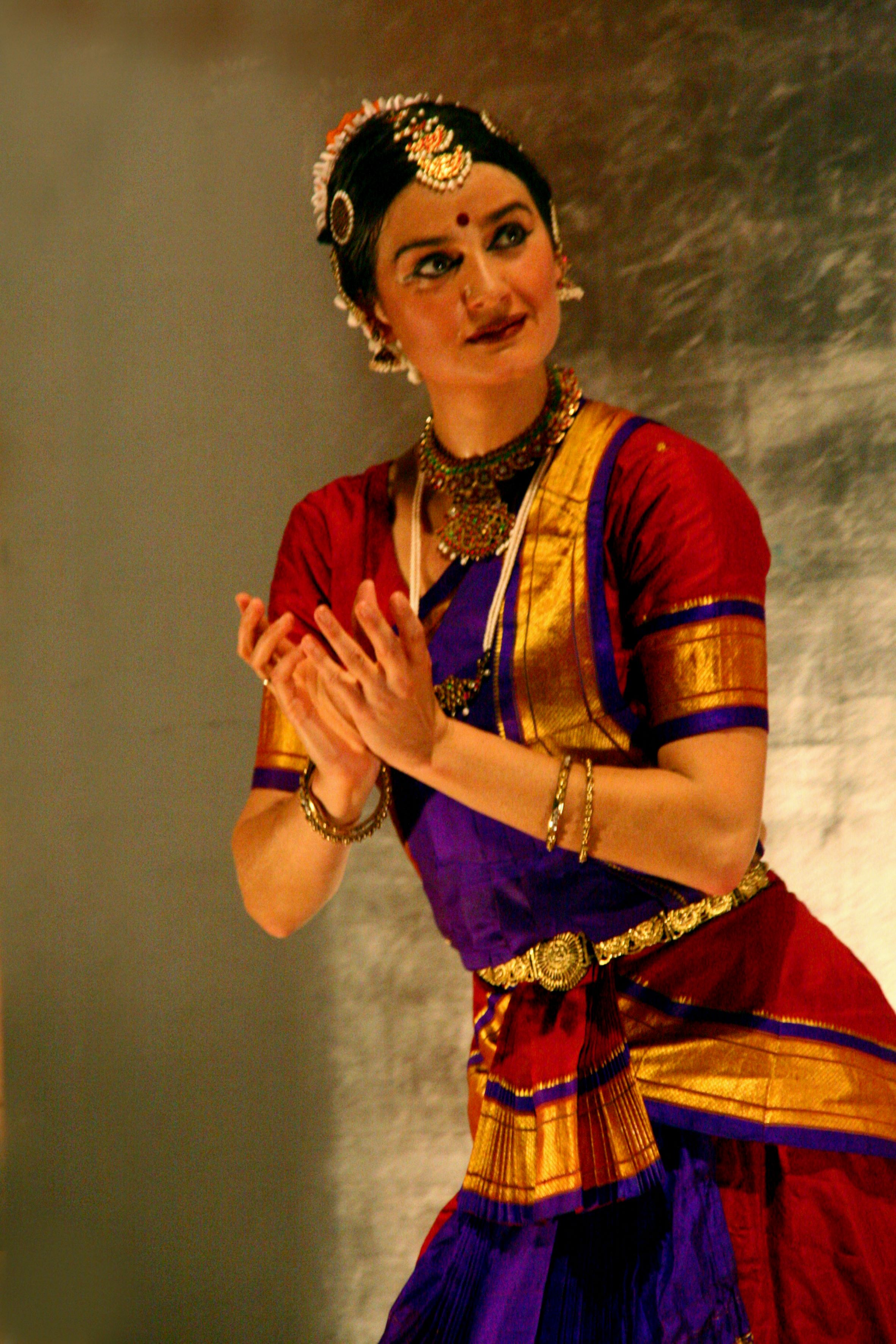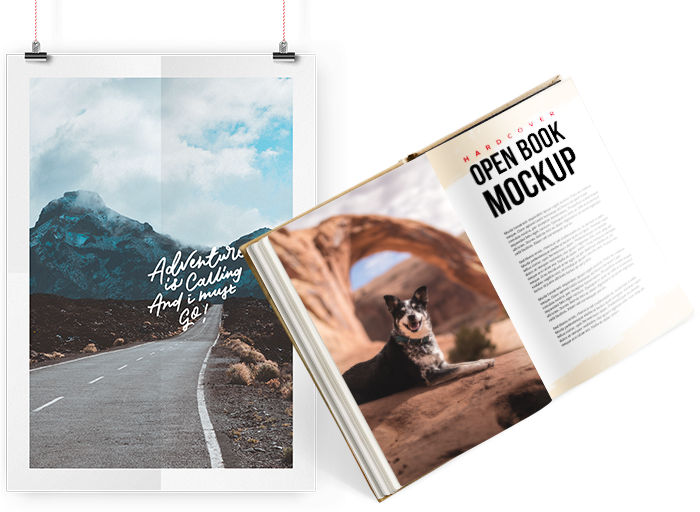18 November 2023 /
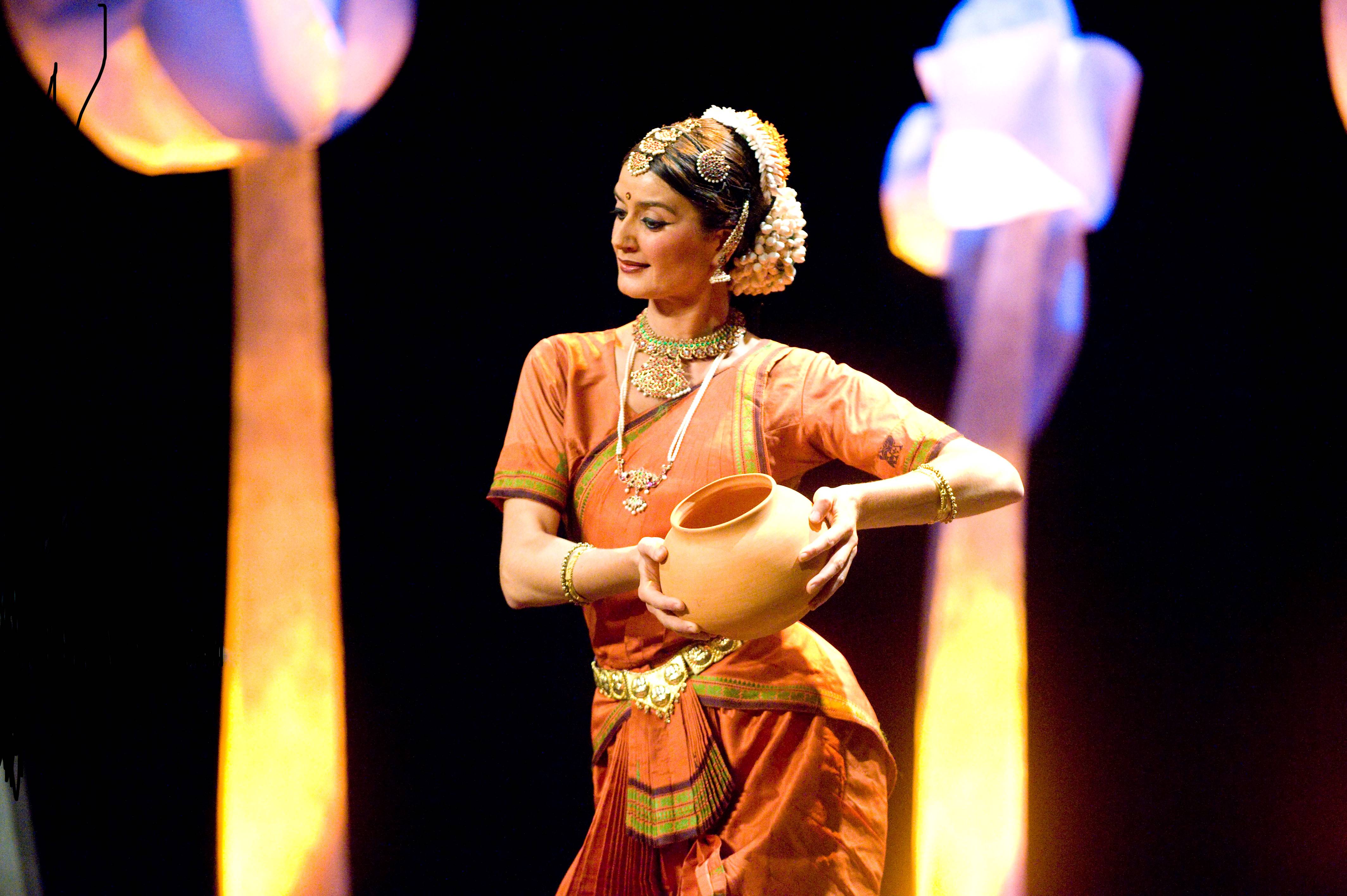
MÓNICA DE LA FUENTE
Renowned Dancer, Choreographer and Researcher in Indian Performing Arts
Mónica de la Fuente, dancer, choreographer and researcher in Indian performing arts who was awarded the ICCR Distinguished Alumni Award 2019 by Indian Council for Cultural Relations, Government of India.
Mónica de la Fuente has devoted herself for the last 20 years to the creation and dissemination of the classical and contemporary dances of India. She has been teaching art, lecture demonstrations on dance and theatre based Indian classical performing arts techniques at various theatres, dance schools and universities of Spain since the year 2000.
She also teaches at the Performing Arts Kalasangam at Casa de la India in Valladolid, a foundation for the promotion of Indian Culture in Spain and directs LAB-INDIA, the Laboratory for Performing Arts at Casa de la India.
Now Mónica de la Fuente prepares a documentary about her artistic career and explores her new creation EMBODIED -CUERPO HABITADO with her daughter Nazare de la Fuente, a flamenco dancer.
Mónica de la Fuente received her training in classical dance and theatre, Bharatanatyam and Kathakali from the country’s most prestigious schools in the field of the performing arts (1994-2000): Kalakshetra, Chennai and Kerala Kalamandalam; Margi from Kerala with the support of the ICCR, Government of India and AECID, Spain. She is also trained in Kalaripayattu, martial art from CVN Kalari, Trivandrum, Kerala and Maruthi Marma in South Kalari style.

JOURNEYS THROUGH NATYA – DANCE AS A PLAY OF LIFE
“I was a nineteen year old theatre student from Spain and I had no words then to explain what happened to me on that specific day, the 20th of February of 1994 at the Khajuraho Dance festival. My entire life changed when I saw Alarmel Valli ́s enthralling Bharata Natyam dance that evening. After that unforgettable performance I took a train from Khajuraho to Chennai, her hometown and knocked at her door to inquire whether she would accept me as her student. Following her suggestion, I ended up applying for admission at Kalakshetra College in Thiruvanmiyur, Chennai and few months later had a letter from ICCR granting me a scholarship, stating that I could start the journey of my life in dance,” renowned artist Mónica de la Fuente shares her artistic journey.
“As a theatre student in Spain I had to fight to convince my family to accept my decision to become an artist. And if that was not already difficult enough, my firm determination to study dance in India was to become an even greater challenge. I called my parents over the phone from an ISD booth in Chennai and when I informed them about my decision it was a rather heavy blow for them as I was still a teenager and this was India, thousands of miles away from home. Of course, I did tell them I had applied for a scholarship which gave more credibility to my new adventure and so I have to acknowledge ICCR for having given me such a great opportunity in my life. In the context of a young student, as was my case, to pursue a dream like this, so far away from home and at the same time to be able to certify my studies in India with the support of a scholarship, this meant a lot,” she added.
What did I experience that evening in Khajuraho? I could sum it up in three words: “Satyam Sivam Sundaram”, a phrase from the traditional Indian world view which means “truth, goodness and beauty”. I have kept these words in my mind as a mantra and it still inspires me today to find the ultimate meaning of art in my daily life.
“Crucial for me was the idea of “Lasya kavya”, which also signifies fluidity and creativity, and the concept of “drishya kavya”, the visible poem, the dancer as creator, poet, painter, sculptor, actor and singer, at the same time referring to the symbolic and metaphoric world of dance. Dance not as something removed from life, that is, esoteric or remote, but as the essential and truthful expression of my being.
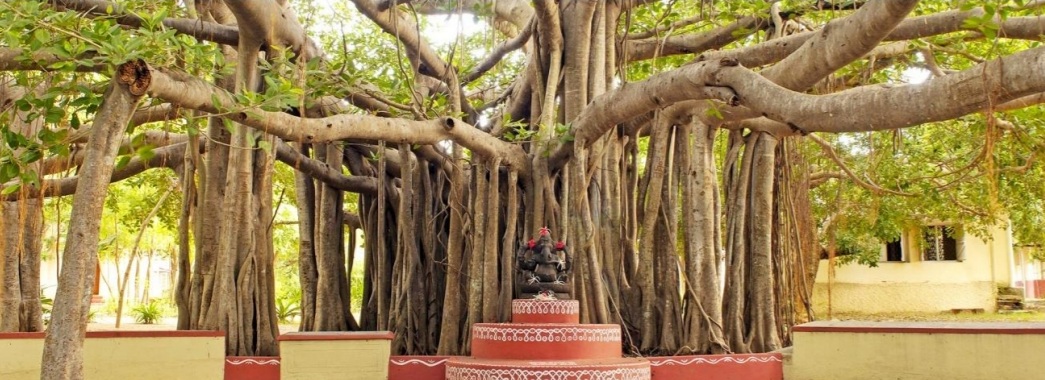
Walking into Kalakshetra campus that very first day in June 1994 in the scorching heat of Chennai was like entering into a dream world. From very early in the morning students were walking to school in silence, then sat on the ground around a beautiful banyan tree and started to chant a universal prayer. The teachers, the Principal and the staff, students and newcomers like me were participating in a ritual where everyone was welcomed and where art was the sacred thread that connected us all, beyond religion and culture. The first lesson before starting the physical training was the explanation of the origin of drama, taken from the first chapter of the great treatise on Indian performing arts, the Natya sastra. This ancient Sanskrit text explained the sacred essence of the arts and the relevance of art in society, valid even today. Nowhere else in the world is there such a compendium of wisdom on the art of expression as the sacred integrator of life and knowledge. And it is not only a theoretical work but a manual for artists that incorporates and studies the precise art of movement and integrates all the arts and sciences. The ritualistic aspect of Indian classical arts and the devotion of the artist to embody and communicate the intangible became essential in my life.
I later continued my Bharata natyam training in Chennai for several years under my guru Meena Raman, who introduced me to the subtle nuances of the padam poems from the Bhakti tradition. But then, another turn in my search as an artist drew me into the world of Kathakali, the dance-drama of Kerala. In a metaphorical sense, it was like entering a deeper layer, a new discovery which satisfied my nature as an incessant researcher and theatrical performer. Kathakali offered me a new door to experience “natya”, the vital union of dance and theatre, and the sacred act of a ritual. A tradition where the temple was the sacred stage and the audience were the devotees, witnesses of this sacrifice to accomplish the symbolic pact with the Gods.
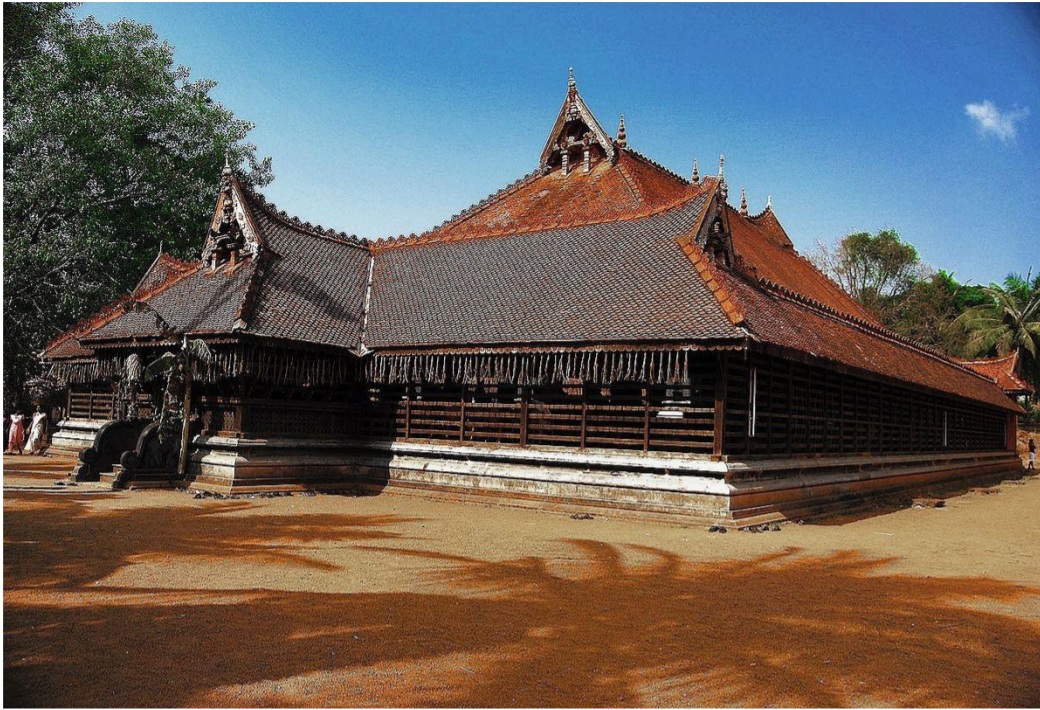
In 1996, I took a train from Chennai to Shoranur in Kerala and then reached Kerala Kalamandalam, situated in the remote village of Cheruthuruthy. The moment I entered the space and admired its astonishing Koothambalam (traditional temple theatre), I could feel the energy and the great work accomplished by the visionary artist poet Vallathol. He founded this pioneering institution in the 1930s to restore, preserve and institutionalize the performing arts so that still in today ́s digital world, young children can decide to dedicate their lives to the beautiful classical art forms of South India. And thus parallel to my Bharatanatyam training I got deeply immersed in the art of Kathakali, its technique and practice, learning the nuances of the connections between the body, the voluntary and involuntary impulses, the breathing, the gestures in the precise and codified language and the navarasa, the nine emotions. The uniqueness and singularity of this holistic art that interconnects the body, the mind and the soul represent for me the greatest artistic contribution of Kathakali to the world of theatre. In order to communicate complete artistic expression, an actor in Kathakali has to experience and master the four types of abhinaya which literally means – the carrying forward of expression.
As is the case with all Indian classical arts, before getting into expression and characterization, a beginner like me had to go through a period of very hard physical training based on Kalaripayattu martial art, and also master all the body conventions based on the classical treatises. So, it was only after a few years of intense work that I could do my arangetram (the first performance in public) which in Kathakali is still a traditional ritual carried out in the temple by the new incoming professional performer.
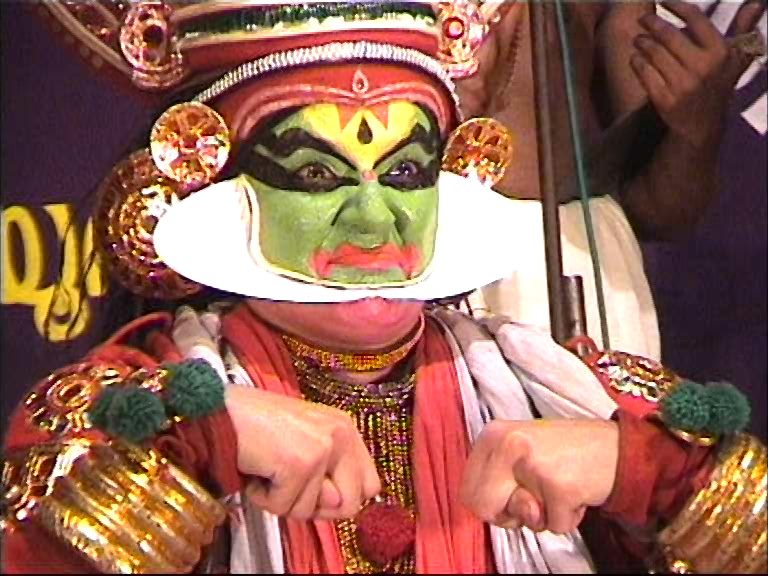
By that time I had moved to the city of Trivandrum to undertake Kathakali studies at Margi, the Centre for Performing Arts where I was able to continue my studies and at the same time put my years of preparation and training into practice by performing with the Margi Kathakali troupe in full night traditional programmes that took place regularly as part of the temple festivals celebrated in the small villages of Kerala. Parallel to my years of physical training I had to make a big effort to read and study about Indian mythology, the epics and the puranas and more precisely to learn the dramatic texts in Kathakali called attakattas, which are the poetic-dramatic scripts that incorporate the gestures, specific rhythms (tala) and characterization of each scene in a Kathakali play.
Though I returned to Spain after 7 long years studying in India, I had the feeling that I had never left India as it was already embodied in my artistic expression. And till now India continues to be the source of inspiration for my professional career as a dancer-creator and as a teacher carrying the knowledge forward, and moreover, as part of my life force and existence (prana).
As it is understood in the ‘Guru-Shishya parampara’ model of transmission of art, I have always felt very much part of the Indian artistic tradition, as I believe this central idea is not limited by borders, cultures or races. It made me grow as an artist, dancer, choreographer, actress, artistic director and as a teacher by being faithful to the inner multidisciplinary essence of “natya” and its transmission.
I strongly believe in the preservation and at the same time organic evolution of classical arts in today`s world, and I keep promoting and performing Indian Classical Dance as much as I can. At the same time, I also find it essential to experiment and create by adapting content from the Indian tradition incorporating contemporary techniques of dance and theatre. This allows me to develop a new and personal artistic language through which I can reach out to larger audiences in Spain and other European countries,” renowned artist Mónica de la Fuente elaborately unveils her myriad experiences in her “JOURNEYS THROUGH NATYA – DANCE AS A PLAY OF LIFE”, a brief portrait of her own life in an article shared.
In the ‘Prologue’ of the article, artist Mónica de la Fuente says:
As the invisible curtain rises, the creation of the world unfolds. If in the Genesis light is God ́s first act of creation, in the Indian ethos it is sound, “ta dhit thom nam” (in the Upanishads associated with Brahman, “tad hi tvam nam”), what resonates in the beginning of the cosmic performance.
I am sitting on a chair with hundreds of people around me in front of the Chitragupta Temple dedicated to Surya, the Sun God, who with a gentle smile withdraws to transform his power into the colourful stage lights. A sculpture comes alive. As the dancer emerges from the shadow, for two hours the captured time ornamented by intricate rhythmic syllables turns poetry into dance; or maybe it is the dance and not the dancer anymore, what evokes bodily words.

AWARDS AND PERFORMANCES
Mónica de la Fuente has been awarded ‘Distinghed Alumni Award’ from ICCR, Government of India for her artistic career and her contribution to the artistic and cultural dialogue between India-Spain in 2019.
In Spain, she founded her own dance theatre company in 2000 and since then has performed at numerous festivals and theatres in India, Europe, and the USA, presenting various Indian classical dance shows and contemporary creations in experimental dance-theatre.
In the field of contemporary dance, her choreographies include Laya Chitra (2008) which was created for the Métis Festival in Saint Denis, France, with musician Ravi Prasad, and La voz del cuerpo ( the voice of the body – 2013) which premiered at Madrid’s Círculo de Bellas Artes and was then staged at international festivals like FACYL in Salamanca and Festival Format Raisins in France.
Mónica de la Fuente has choreographed for operatic productions –Bizet’s The Pearl Fishers and Puccini’s Edgar– and indo-flamenco creations such as Roots, Living Traditions: Flamenco-India, an Indo-Spanish production for the Ahmedabad Heritage Festival (2009), Indalusia with renowned flamenco-jazz musician Jorge Pardo in Qatar (2011), as well her own Indo-Spanish productions Flamen carnatic 2014) and Rasa-Duende (2015) with flamenco singer José Salinas. Rasa -Duende based on poems by the Spanish poet Federico Garcia Lorca was presented at the Jaipur Literature Festival 2015 as a special event at the Hawa Mahal in Jaipur and toured in India in several Festivals in collaboration with Government of Kerala and AC/E Acción Cultural Española. In 2018-19 she toured Rasa Duende in India sponsored by Air India, Incredible India and Government of Kerala, performing at various Literature Festivals in India. In 2021 she also created ‘TAGOREANDO’, poems by Tagore in flamenco and Indian performing arts, a music dance performance with Antonio Andrade Flamenco Company which performed on many platforms in India and Spain.
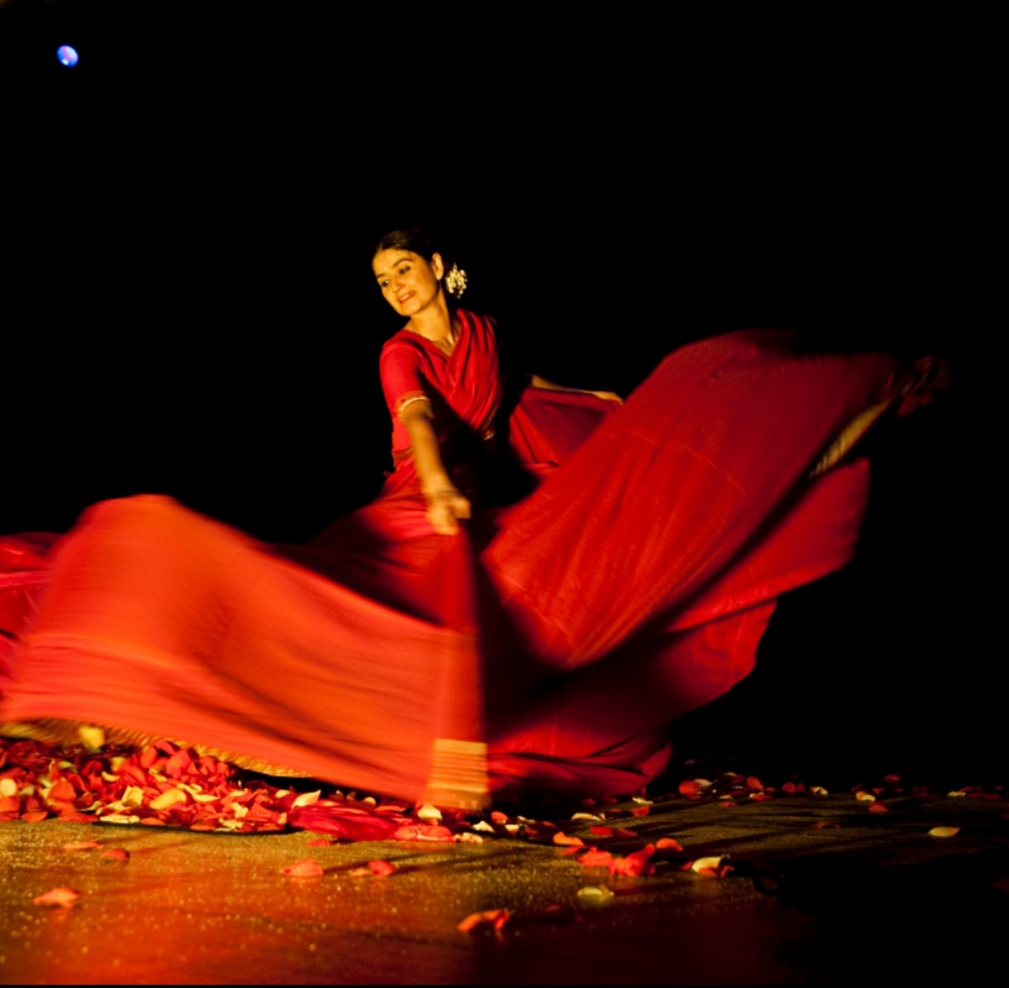
Another important creation is ‘PRAANA’, an international co-production as a dance-theatre play directed by Gregorio Amicuzi during the pandemic that has been performed in Teatro Jovellanos of Spain and other relevant venues. Her contribution in the field of performing arts is also pioneering in adapting Spanish medieval mystic poetry St. John of the Cross Bhakti, del pez al pájaro into the classical Bharatanatyam expression, as well as creative theatre experiments such as The flower of desire on the Mahabharata´s story in Kalyana Saugandhika Bharatanatyam and Kathakali, Lila, Rama´s play based on Ramayana for the International Theatre Festival of Kerala ITFOK and The Narrow path of Akka based on the life of a woman bhakti mystic Akka mahadevi as a dance-theatre piece with live musicians from Spain and India.
Mónica de la Fuente has created a new contemporary piece ‘When mirrors are windows’ based on the diaries and poems of renowned poet and scholar A.K Ramanujan written by Guillermo Rodríguez. She has performed at various literature festivals in the US and India such UC Berkeley University, Boulder University, Jaipur Literature festival and Chennai literature Festival for Life.
She worked as the artistic coordinator and one of the lead choreographers and performers in the live show, Flamenco India directed by legendary filmmaker Carlos Saura and premiered at the Calderón Theatre of Valladolid (Spain) in October 2015.

Mónica de la Fuente has been the associate director and choreographer of Kijote Kathakali, a theatre production directed by Nacho Garcia premiered at the International Festival of Classical Theatre in Almagro and toured Spain July 2016 and Mexico and Belgium in 2018.
In 2023 she produced under the direction of renowned theatre director Ignacio Garcia, the dance theatre play LIFE IS A DREAM by Calderon de la Barca, XVI Century playwright that premiered at Cervantes Institute, New Delhi. For the inauguration of Jaipur Literature Festival at Valladolid in its first edition she has also created, TARIQA , the mystic travellers with sufi poetry of Alandalus and other Sufi poets with musicians German Diaz and Vidhya Shah.
Mónica de la Fuente has been teaching and giving lecture demonstrations on dance and theatre based on Indian classical performing arts techniques at various theatre, dance schools and universities of Spain including University of Valladolid, University of Salamanca and many more. She has created various educational programmes ‘Artistea’ sponsored by the Regional Government Castilla y Leon to incorporate dance at primary and secondary schools.

